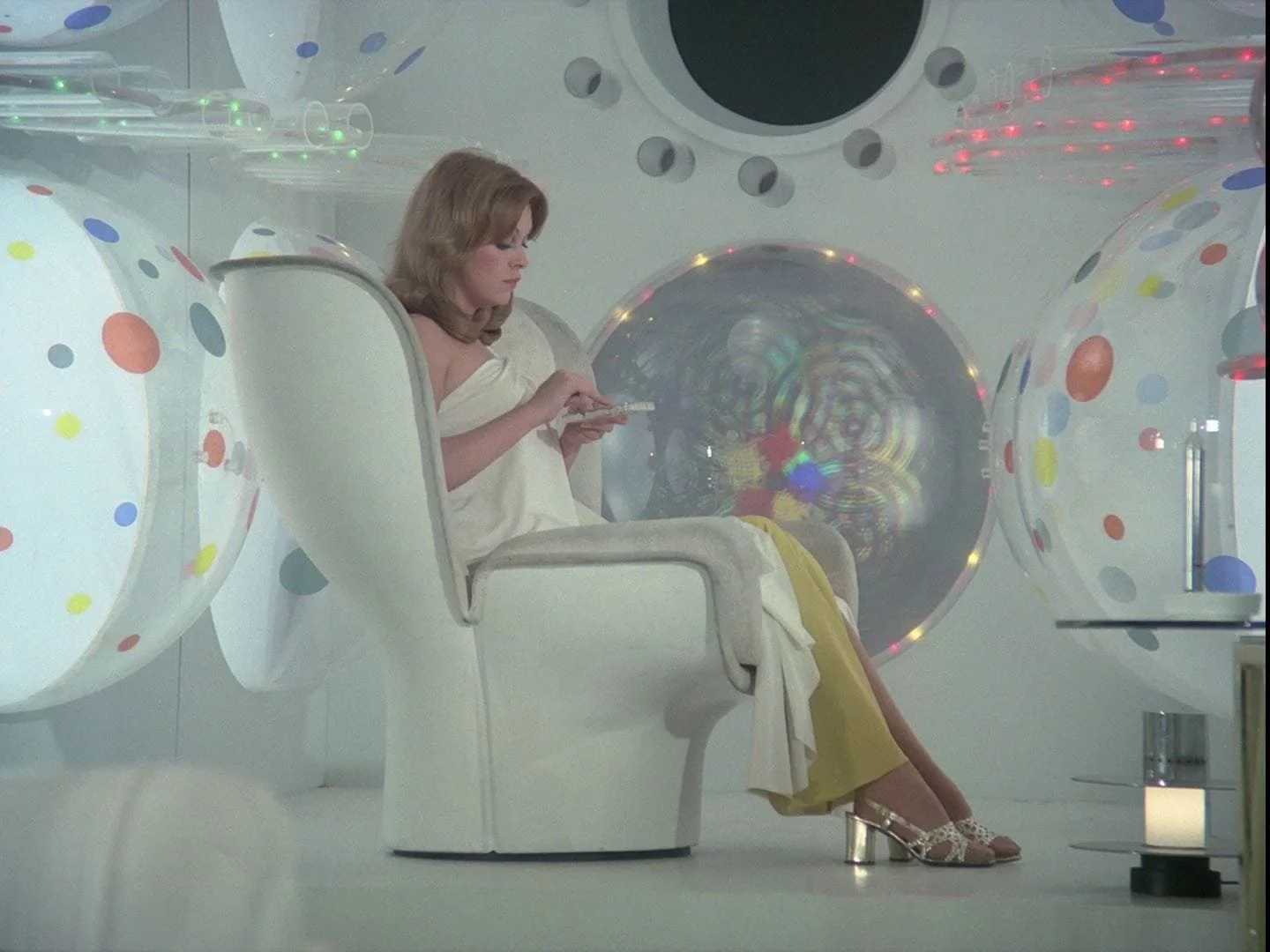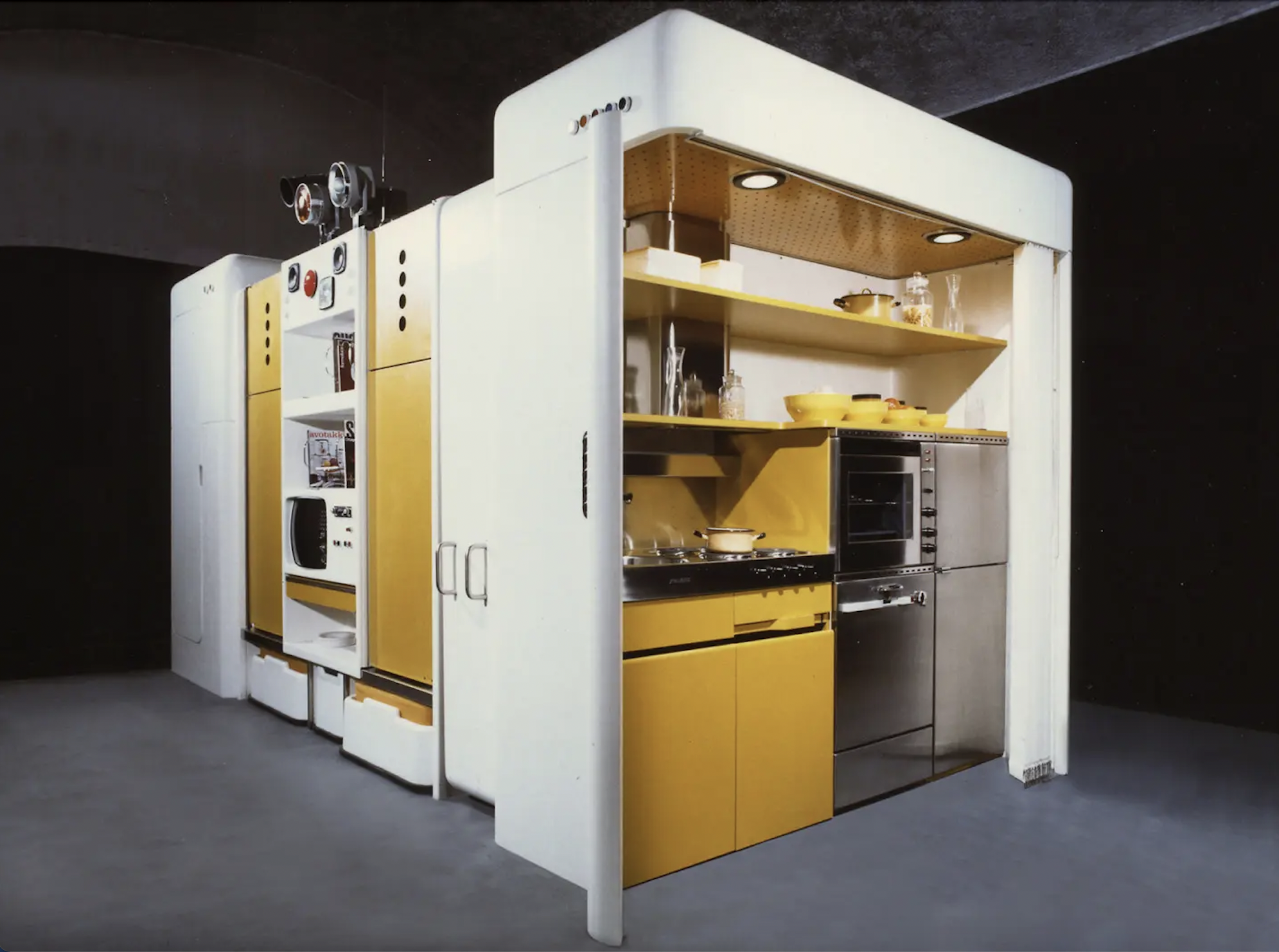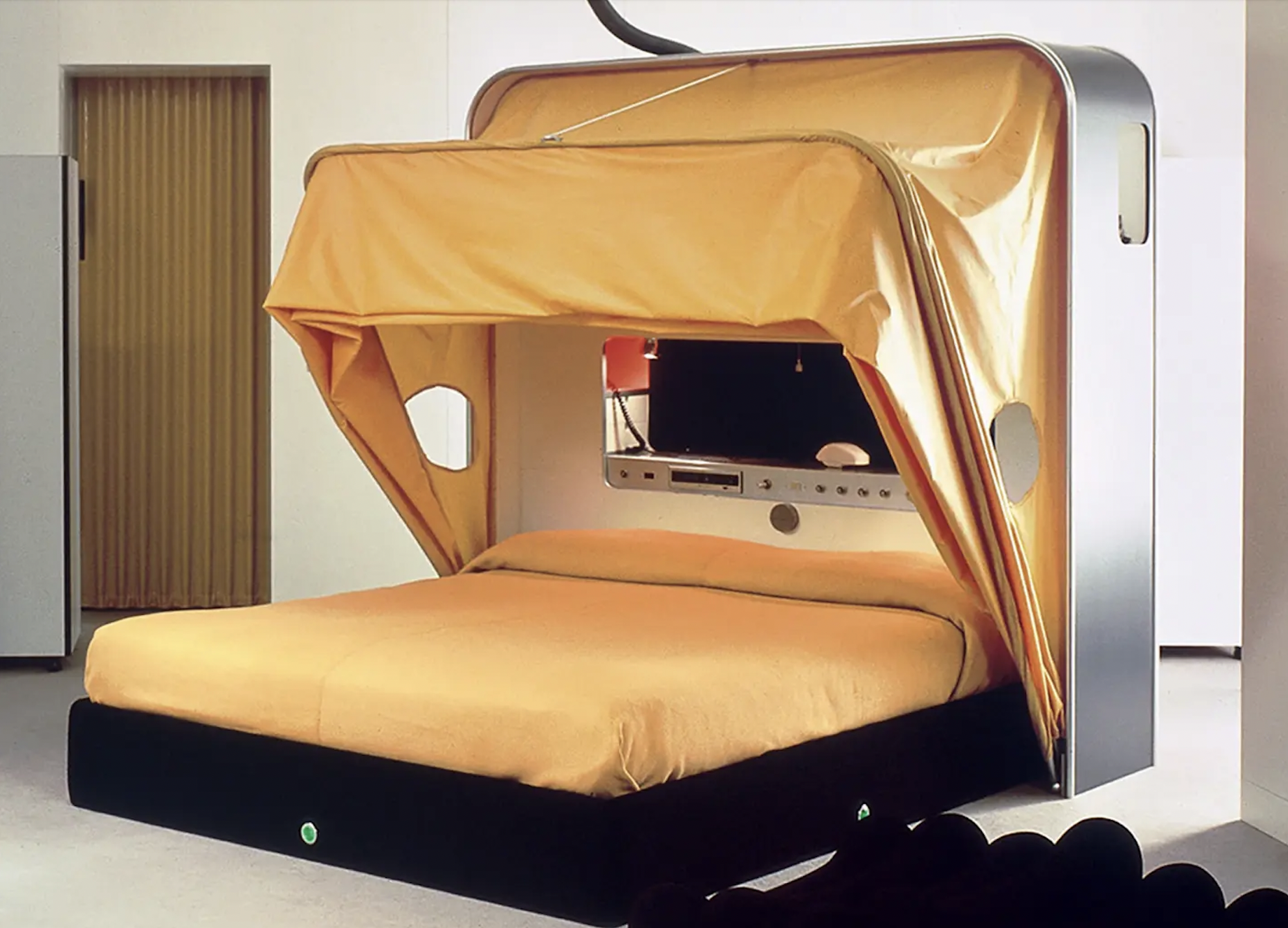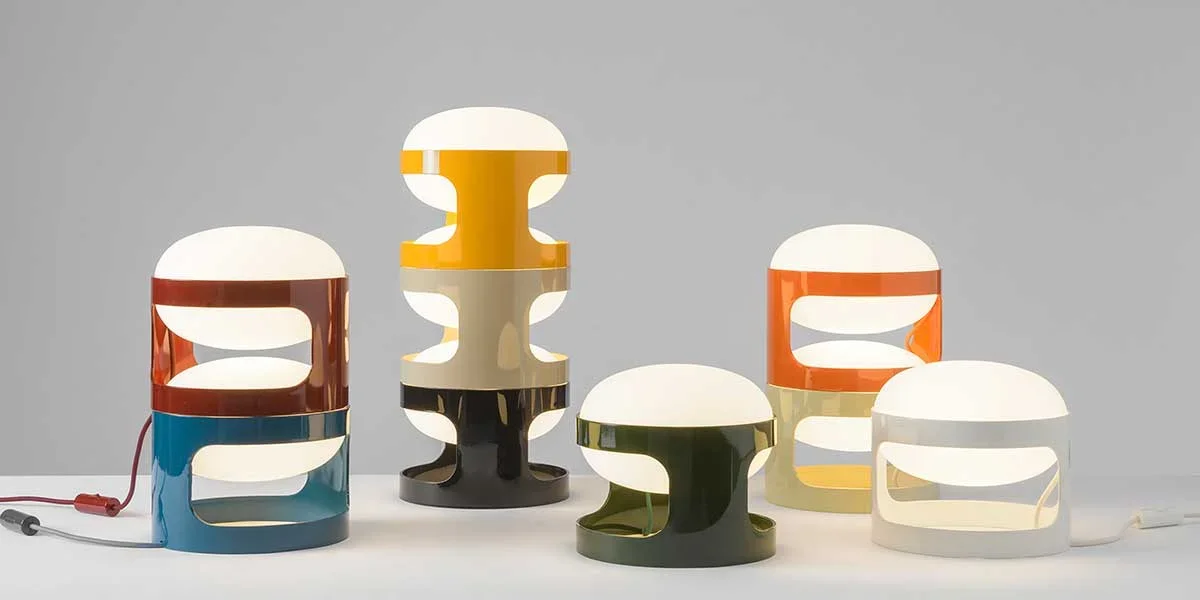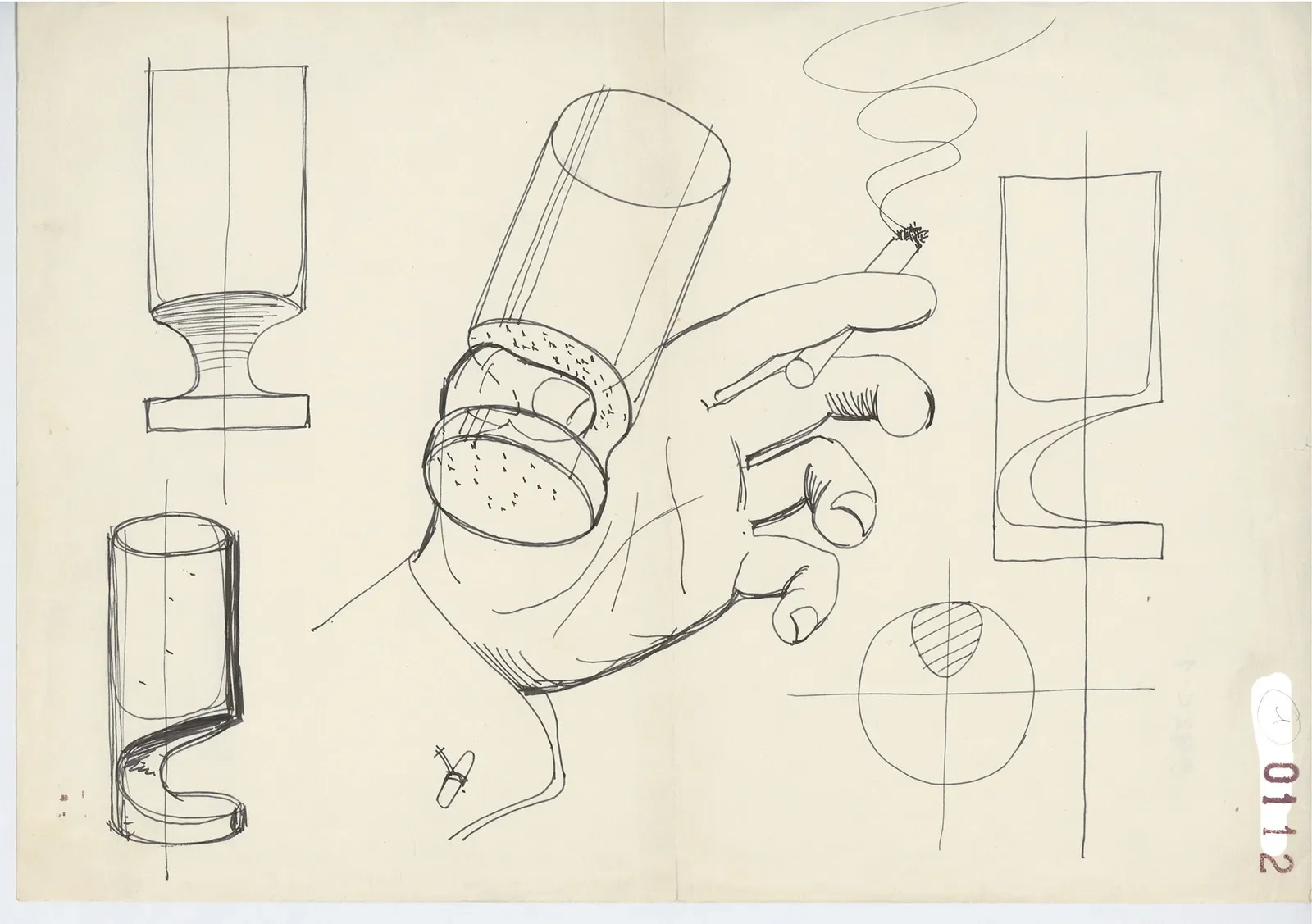JOE COLOMBO
1930 - 1971
JOE COLOMBO
Despite the challenges posed by the limited modern industrial production in Italy then, Colombo fearlessly pushed the boundaries with his futuristic furniture proposals, ultimately creating iconic international design pieces
his mother was an artist who encouraged the young Colombo to pursue his creative instincts from a very young age. Given his upbringing, it is not surprising that Joe first decided to pursue an artistic career enrolling in Milan’s Accademia di Belle Arti di Brera. During his studies at the Accademia, he befriended artists Sergio Dangelo and Enrico Baj, who had been influential in the creation of the avant-garde Movimento Nucleare, a group whose aim was to transform the art of painting in response to the tensions of the modern nuclear age. Until 1958, Colombo worked mainly as an Abstract Expressionist painter and sculptor and thrived on the Movimiento Nucleare group’s energy and intensity, which fueled in his work a fascination with an almost futurist aesthetic.
SCIENCE FICTION
In 1959, Joe Colombo’s father died, and he decided to run the family electrical appliance business while experimenting with new manufacturing methods and materials. An avant-gardist in life and in his work, Colombo began experimenting with new plastic materials as early as 1959 when, after the death of his father Giuseppe, he inherited his father's electrical equipment company, and immediately afterwards began to reflect on how to reconcile his artistic and architectural training with the world of industry. He was the first to realise the potential of fibreglass, ABS, polyethylene, PVC and methacrylates in the field of design: his products, after an initial phase in which they pursued an "unconscious form", were conceived and "married" to the chosen material.This new and unexpected experience influenced him to switch from painting to architecture and design, where his fascination with futuristic themes not only remained intact but found a new invigorating venue. In fact, one of his first design projects was a series of installation works made from television sets that were assembled in the form of shrines; the work was exhibited at the 1954 Triennale di Milano. Colombo decided to open his own design studio in Milan in 1962, entering the busiest phase of his career as he designed furniture, lighting, interiors, and glassware.
Each of his designs – from the object to the shop and stand fittings – had to correspond to four criteria: functionality, dynamism, transformation and mobility. Between 1963 and 1965, he added his love of mechanics to his search for form and function. As the author writes, one of the most significant prerogatives of Joe Colombo's design process was finding multiple solutions for the same problem.
Also in 1962, Joe and his brother Gianni designed for Oluce the Acrilica lamp, an elegant and innovative table lamp that made use of a curved acrylic attached to the light source and that encapsulated the sensitivity of the time. In addition to numerous architectural projects, Colombo lent his design expertise to several now-iconic furnishings, such as his No. 4801 chair produced for Kartel (1963–64), which consisted of three pieces of plywood inserted into one another; the iconic Elda chair, made of fiberglass and 7 tubes of leather sheaths, dedicated to his wife Elda, and produced for Combort F.lli Longhi (1963); the Additional Living System produced for Kartell (1967), which was a modular and versatile design created by individual slices of upholstered metal and foam that could create a number of seating arrangements; and the Tubo lounge chair produced for Capellini (1969), which was constructed from a series of tubes and helped to secure Colombo’s status as a leading figure in modern Italian design.
Colombo’s emphasis on curved forms, use of bold color, and reliance on emerging material made his designs their own meditation on the Modern age and thus incurred a remarkable number of fans. His sudden death at the age of 41 from heart failure cut a brilliant career too short, but his importance has lived on. Recent years have witnessed a growing interest in his work, with larger exhibitions and retrospectives featuring his work around the globe.
KEY DESIGNS:
B&B Italia: The design duo created several influential pieces for this Italian furniture company.
Coronado sofa (1966): An armchair and sofa that embodies the era's taste for soft, rounded shapes.
Artona series (1975) A collection of high-end timber furniture, including the Artona Armchair, that showcases the Scarpas' craftsmanship.
Bamboo bedside table (1970s): A vintage piece made of bamboo.
Soriana sofa (1969): A groundbreaking modular sofa that won the Compasso d'Oro prize. It features a chromed metal frame that cinches plush polyurethane foam padding.
121 chairs (1960s): A series of chairs and extensible tables made with a distinct solid wood trestle structure and curved plywood seats.
Bastiano sofa (1961): A wooden sofa designed for Gavina.
Pigreco chair (1959): One of their first furniture designs to go into production, it has an elegant three-legged appearance.
Papillion lamp (1973): One of the first lamps to use halogen technology
Nictea chandelier (1962) A chandelier with a Space Age design, featuring a nickel-plated brass structure and pressed glass
Foglio wall light (1969) A vintage metal wall light with a distinctive curved shape.
Saturnina lamp (1998)
Galeto lamps (2001)


